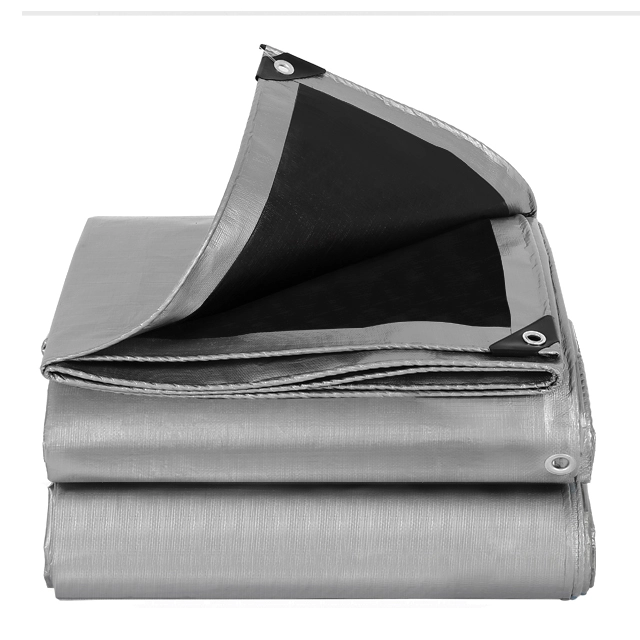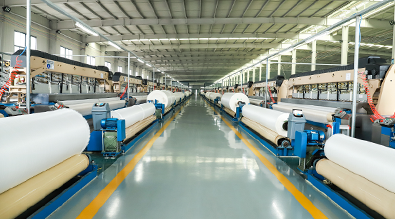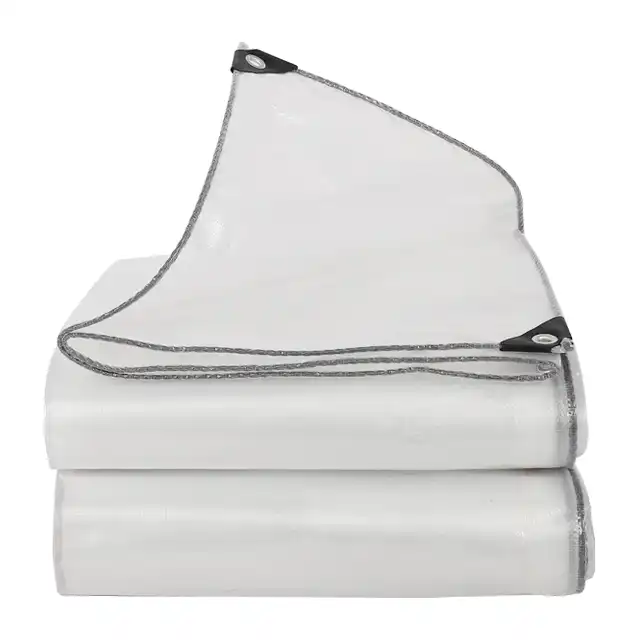The Future of Tarpaulin Materials: Trends and Innovations
Have you ever watched your equipment deteriorate under harsh weather, or witnessed valuable cargo damaged during transport because traditional tarpaulin materials simply couldn't withstand the demands of modern applications? The future of tarpaulin materials is being rewritten by groundbreaking innovations that address these exact pain points. From biodegradable alternatives that protect both your assets and the environment, to smart coatings with integrated sensors that monitor coverage conditions in real-time, the tarpaulin industry is experiencing a technological revolution that promises to transform how we protect, cover, and preserve materials across construction, agriculture, logistics, and industrial sectors worldwide.
Advanced Material Technologies Reshaping Tarpaulin Performance

The evolution of tarpaulin materials has moved far beyond traditional canvas or basic polyethylene sheets. Today's manufacturing landscape is witnessing a paradigm shift driven by high-performance synthetic materials that deliver exceptional durability while addressing long-standing industry challenges. Modern tarpaulin production now incorporates advanced HDPE woven fabric combined with specialized LDPE coating systems, creating products that withstand extreme conditions while maintaining flexibility and lightweight characteristics. These innovations directly respond to customer frustrations with premature tearing, UV degradation, and water penetration that plagued earlier generations of protective coverings.
-
High-Density Polyethylene Innovations
Contemporary HDPE tarpaulin manufacturing utilizes yarn extrusion technology ranging from 400D to 2500D thickness, allowing manufacturers to precisely calibrate strength-to-weight ratios for specific applications. The tightly woven polyethylene fibers create a fabric structure that is then laminated on both sides, producing sheets with tear resistance capabilities that far exceed conventional materials. Advanced production facilities now employ ultra-wide braiding machines capable of producing seamless tarpaulin widths up to five meters, eliminating weak points created by joints and dramatically improving overall structural integrity. This technological breakthrough addresses critical concerns in sectors like aquaculture, where impermeable coverage without seams prevents water contamination and ensures optimal environmental control.
-
Enhanced Coating Systems for Extended Lifespan
The coating technology applied to modern tarpaulin materials represents one of the most significant advancements in protective performance. Professional technicians now oversee sophisticated coating machines that apply multiple layers of specialized compounds designed to repel water, resist mildew formation, and provide crucial protection against harmful ultraviolet radiation. UV treatment ranging from one to seven percent concentration extends the functional lifespan of tarpaulin products by preventing the photodegradation that causes traditional materials to crack, fade, and lose structural integrity after extended sun exposure. These enhanced coating systems incorporate fire-retardant additives and anti-corrosion properties, creating tarpaulin solutions suitable for specialized applications in construction sites, industrial facilities, and transportation sectors where safety regulations demand superior material performance standards.
Sustainable and Eco-Friendly Tarpaulin Solutions
Environmental consciousness has become a driving force reshaping the tarpaulin industry, with manufacturers responding to growing demand for sustainable protective materials that minimize ecological impact without compromising performance. The traditional perception that durable tarpaulin products must rely solely on non-degradable plastics is being challenged by innovative approaches to material science and manufacturing processes. Industry research indicates that biodegradable tarpaulin options are projected to capture between fifteen and twenty percent of the global market by 2035, reflecting both regulatory pressures and genuine consumer preference for environmentally responsible products that align with corporate sustainability initiatives and personal values regarding environmental stewardship.
-
Biodegradable Material Development
Recent breakthroughs in polymer technology have enabled the creation of biodegradable tarpaulin materials that maintain the strength and weather resistance required for demanding applications while offering significantly reduced environmental footprints. Starch-based polyethylene formulations now achieve complete degradation within three to five years under appropriate conditions, compared to the centuries required for conventional plastic materials to break down in natural environments. These biodegradable alternatives incorporate natural fibers such as hemp and jute blended with advanced polymers, creating composite materials that deliver robust protection during their functional lifespan before decomposing without leaving harmful residues. While cost considerations and durability comparisons continue to evolve, collaborative research between academic institutions and manufacturing facilities is accelerating the development of next-generation eco-friendly tarpaulin solutions that meet both performance expectations and environmental responsibility standards.
-
Recycling Initiatives and Circular Economy Approaches
Beyond biodegradable alternatives, the tarpaulin industry is embracing circular economy principles through comprehensive recycling programs that collect, process, and repurpose used materials into new protective products. Manufacturers implementing these initiatives demonstrate that polyethylene tarpaulin materials can be effectively recycled multiple times without significant performance degradation, dramatically reducing the volume of plastic waste entering landfills and natural ecosystems. An estimated twenty-five percent of new tarpaulin product launches now feature recycled materials as primary components, with advanced sorting and cleaning technologies enabling the recovery of high-quality polyethylene suitable for demanding applications. This shift toward recyclable tarpaulin production not only addresses environmental concerns but also provides manufacturers with more stable raw material costs by reducing dependence on petroleum-derived virgin plastics subject to volatile market pricing and supply chain disruptions.
Smart Technology Integration in Modern Tarpaulin Products
The convergence of traditional tarpaulin manufacturing with digital technologies is creating entirely new categories of "smart" protective materials equipped with embedded sensors, tracking systems, and monitoring capabilities. These innovations represent a fundamental shift from passive covering solutions to active systems that provide real-time data about usage patterns, environmental exposure, and material condition. Industries managing extensive inventories of protective equipment across multiple locations are discovering that technology-enhanced tarpaulin products deliver operational efficiencies and security improvements that justify premium pricing while reducing total cost of ownership through optimized deployment, preventative maintenance, and loss prevention capabilities that were simply impossible with conventional covering materials.
-
RFID and GPS Tracking Systems
Leading manufacturers are now embedding RFID tags and GPS tracking devices directly into heavy-duty tarpaulin products, enabling logistics companies, construction firms, and agricultural operations to maintain precise inventory control and location awareness. This technology eliminates the frustration and financial losses associated with misplaced or stolen protective equipment, with tracking systems providing instant location data accessible through smartphone applications and web-based management platforms. Fleet operators covering cargo with technology-enabled tarpaulin materials gain comprehensive visibility into equipment utilization rates, allowing data-driven decisions about optimal inventory levels and replacement cycles. The integration of these tracking systems also supports compliance with regulatory requirements for supply chain transparency, providing verifiable documentation of cargo protection throughout transportation and storage operations that increasingly demand auditable security protocols.
-
Sensor-Equipped Monitoring Capabilities
Beyond location tracking, emerging smart tarpaulin designs incorporate environmental sensors that monitor temperature, humidity, UV exposure levels, and material stress indicators. These sensor arrays communicate wirelessly with management systems, alerting users to potential coverage failures before they result in damaged goods or safety incidents. Agricultural applications benefit particularly from humidity sensors embedded in greenhouse tarpaulin materials, providing precision data that optimizes growing conditions while minimizing water waste and preventing disease conditions associated with excessive moisture. Construction sites utilizing sensor-equipped tarpaulin products receive real-time alerts about wind stress that might compromise protective coverings, enabling proactive adjustments that prevent equipment damage and maintain weather protection for building materials. This transition from reactive problem-solving to predictive maintenance represents a fundamental evolution in how industries approach asset protection strategies.
Specialized Performance Features for Demanding Applications
Modern tarpaulin manufacturing has evolved beyond one-size-fits-all solutions to offer highly specialized products engineered for specific industry requirements and environmental challenges. This customization capability addresses the diverse needs of sectors ranging from aquaculture operations requiring completely impermeable barriers to logistics providers demanding arctic flexibility for cold-climate transportation. Advanced research and development teams now work closely with end-users to understand precise performance requirements, translating field experience into targeted material innovations that solve real-world problems rather than offering generic protective solutions with inconsistent results across different application scenarios.
-
Waterproofing and Weather Resistance
Achieving truly waterproof performance requires sophisticated understanding of fabric construction, coating chemistry, and seam-sealing techniques that prevent moisture penetration under varied pressure conditions and extended exposure periods. Contemporary tarpaulin products designed for aquaculture applications utilize specialized coating formulations that remain completely impermeable even when submerged for extended periods, protecting water quality in fish farming operations where contamination prevention is absolutely critical. The mesh count specifications ranging from 10x10 to 14x14 threads per square inch directly impact waterproofing effectiveness, with tighter weaves creating smaller gaps between fibers before coating application. Thickness measurements between seven and twelve mil provide the structural foundation that coating layers adhere to, creating integrated systems where fabric and coating work synergistically rather than as separate components. These carefully engineered waterproofing systems maintain effectiveness across temperature ranges from arctic conditions to tropical environments, with anti-freezing properties ensuring flexibility and protection even in extreme cold that renders traditional materials brittle and prone to cracking.
-
Fire Resistance and Safety Compliance
Industrial and construction applications increasingly require tarpaulin materials that meet stringent fire safety regulations, driving development of flame-resistant formulations that prevent ignition and limit flame spread. Fire-prevention function development has resulted in specialized coating additives that create self-extinguishing properties, ensuring that accidental exposure to sparks or heat sources does not trigger catastrophic fires that endanger workers and destroy valuable equipment. These fire-resistant tarpaulin products undergo rigorous third-party testing to achieve certifications required by building codes and insurance underwriters, providing documented proof of safety performance that protects both people and property. Manufacturing facilities producing these specialized materials maintain ISO 9001 2015 certification and implement comprehensive quality monitoring systems throughout production processes, ensuring consistent performance characteristics across every sheet produced. The combination of fire resistance with other essential properties such as waterproofing and UV protection creates multi-functional tarpaulin solutions that reduce equipment inventory requirements while maintaining compliance with diverse regulatory frameworks governing different industrial sectors.
Conclusion
The tarpaulin industry stands at the intersection of traditional manufacturing expertise and cutting-edge innovation, delivering materials that protect assets while addressing environmental responsibility and operational efficiency demands that define modern business practices.
Cooperate with Linyi Shengde Plastic Co., Ltd.
As a leading China tarpaulin manufacturer and trusted China tarpaulin supplier, Linyi Shengde Plastic Co., Ltd. has established itself as the premier choice for high-quality tarpaulin solutions since 2003. Our state-of-the-art China tarpaulin factory covers 60,000 square meters and operates advanced production lines including 400+ Korea-imported water-jet looms and unique 5-meter width weaving machines, ensuring we deliver superior tarpaulin products for sale at competitive tarpaulin prices without compromising quality standards. Our partnerships with UNHCR, IOM, ICRC, and UNICEF demonstrate our commitment to producing high quality tarpaulin that meets the most demanding international specifications. With ISO 9001:2015 certification, comprehensive quality monitoring systems, and a dedicated research and development team continuously advancing product capabilities, we offer China tarpaulin wholesale solutions backed by two decades of manufacturing excellence and export experience across 30+ countries. Whether you require standard PE tarpaulin sheets or customized solutions with specialized features like fire resistance and ultra-wide widths, our technical expertise and production capacity ensure reliable quality, fair pricing, and prompt delivery. Contact us today at info@shengdetarp.com to discuss your specific tarpaulin requirements and experience why Shengde has become the trusted name in protective materials worldwide.
References
1. Future Market Insights. "Tarpaulin Sheets Market Trends & Innovations 2025–2035." Market Research Analysis Report, 2025.
2. Velez, Mira. "Truths and Misconceptions about the Future of Eco-Friendly Tarpaulins: Meeting Emerging User Demands." Made-in-China Industry Insights, 2025.
3. Chandola, V. "Tarpaulin Market Report: Global Forecast from 2025 to 2033." DataIntelo Industry Analysis, 2024.
4. Verified Market Reports. "Tarpaulin Fabrics Market Size, Expansion, Research & Forecast 2033." Global Market Analysis Report, 2025.




